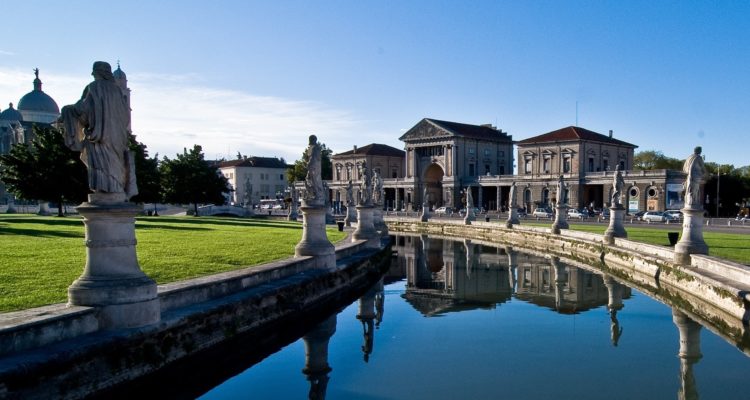What to see in Padua in one day
Verona: city of Romeo and Juliet, the Arena, opera, Pandoro and good wine. There are really a thousand things to do and see in our beautiful Venetian city. Not everyone knows that Verona, thanks to its geographical position and the many lines of trains and buses that it is equipped with, is also perfect as a starting point for fantastic trips out of town. From Lake Garda to the Dolomites, from the cellars of Valpolicella to the art cities of Padua and Venice; if you choose to spend more days in Verona, you will not be bored for sure!
Today’s itinerary will take you to Padua, an ancient Venetian city that will fascinate and amaze you with art, history, religion, gastronomy and entertainment. It is a bizarre mixture where majestic and ancient monuments are flanked by lively municipal markets and street style aperitif kiosks crowded food for university students. So, put on some comfortable shoes, and let’s go!
Starting from Verona, the best way to reach Padua is by taking the train. Between regional, regional fast and high-speed trains, the city is really well served and in less than an hour you will have already arrived. You will not have to worry even if the weather will not be too forgiving with you because with its 12 kilometres of porticoes Padua is perfect to visit every day, excluding Mondays, where most of the main attractions remain closed.
Once out of the station, take the road right in front of you, Corso del Popolo, to go towards the centre. The first unmissable attraction is undoubtedly the Scrovegni Chapel, a fourteenth-century masterpiece that houses the most complete cycle of Giotto‘s frescoes. It is advisable to start from the main attraction of Padua for your daily tour because in the early morning the number of tourists is more limited than usual. Be careful because they do not accept bookings for visits on the same day, book your visit at least 1 or 3 days in advance depending on the payment method chosen.
In addition to the Scrovegni Chapel, the Archaeological Museum, the Museum of Medieval and Modern Art and the Zuckermann Palace, with the Museum of Applied Arts and the Bottacin Museum, are also part of the Civic Museums group at the Eremitani. We advise you to be selective because to visit them all would really take too much time: there are over 23 thousand engravings and drawings in Palazzo Zuckermann and several hundred paintings in the Pinacoteca on the first floor of the Eremitani Museum.
Continue, for Corso Garibaldi and Via Cavour to get to the Caffè Pedrocchi and Palazzo Bò. The first is one of the most famous literary cafes in nineteenth-century Italy, also called “the Café without doors” because in those years it was always open to serve hot drinks, day and night. Here you cannot miss the house specialties: the “Stendhal” zabaglione and the mint Pedrocchi coffee with chocolate flakes. Palazzo Bò, on the other hand, will amaze you with the oldest anatomical theater in the world and, in the Forty room, the chair where Galileo Galilei was taught. A little curiosity? The name “Bò” means “ox”, from the coat of arms of the butcher who owned the palace before the birth of this university which, founded in 1222, is the second oldest university in the world and certainly the only one to have the name of an animal as the original seat.
Continue on the same road, first on Via Roma and then on Via Umberto I, to get to the immense Prato della Valle, an elliptical square that, with its almost 89 thousand square meters of surface, is one of the largest squares in Europe, and then turning into Via Belludi, you are in front of the Basilica di Sant’Antonio, patron saint of Padua (although paradoxically born in Lisbon), simply called “Basilica del Santo“. Did you know that this basilica is owned by the Vatican? It is one of the largest churches in the world, visited every year by millions of tourists and pilgrims, not only for the many works of art preserved in it, but also for the sacred relics of the Franciscan friar, such as the chin and the language still intact.
Now take Via dell’Orto botanico to reach the Botanical Garden of Padua. Originally born to help university students to recognize medicinal plants, it is the oldest university botanical garden in the world, dating back to 1545, and since 1997 UNESCO heritage. You will really find everything there, including several rare and endangered plants.
In the evening, give yourself a nice aperitif in one of the premises of Piazza dei Signori, Piazza delle Erbe or Piazza della Frutta. The famous Aperol spritz, an unmissable drink in the Venetian aperitif, was invented in Padua; better take advantage of it! Then, before returning to Verona, take a few minutes to nose up to observe the fascinating Clock Tower in Piazza dei Signori, where you can look for your zodiacal sign in the oldest astronomical clock in the world. If you’re from Libra, you’ll have to look for the sign of Scorpio, and no, it’s not a joke, in fact Libra and Scorpio were a single sign in the pre-Roman zodiacal system.
Book your holiday in Verona immediately by taking advantage of the offers on multi-night stays that the International Europe Hotel group offers you and trust our itinerary for a trip out of Verona-Padua; you will not regret it!
